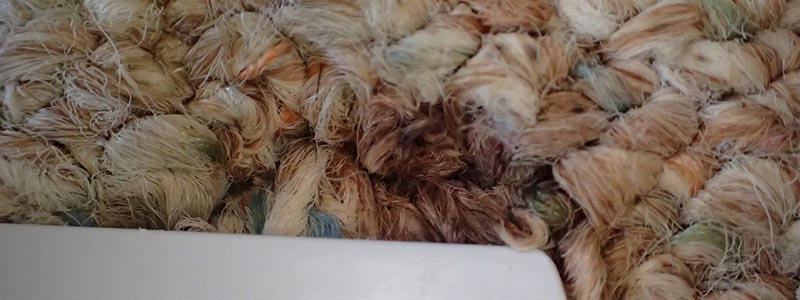Spot, Stain, Wicking, Discoloration…

I find that most people call spots “stains” because that is what everyone else calls them. I also find that most people think carpet spot and stain removal is complex and mysterious. Key differences exist between a carpet spot, stain, wicking, and discoloration. It just takes a good understanding of what each one might be to get it off your carpet successfully.

A spot is something you can feel, and it will rub off onto a towel.
A spot is a relatively small, well-defined area that differs in appearance from the surrounding pile. Typically, a spot is more easily removed than a stain, although some spot contaminants might also contain staining and/or discoloring agents.
In my real-world terms, the definition of a spot is a substance added to the carpet, such as dirt, mud, food, coffee, or soft drink (or another sugary beverage) that was dripped or spilled. It also includes things like tar, gum, or glue. Can you feel it? If so, then it’s a spot! If you can’t, then it’s probably a stain.

A stain is substance that adds color to the fiber and cannot be removed.
A stain is defined as color added. This means color has been absorbed into the carpet fiber—like when the coloring found in Kool-Aid, sports drinks, food, cranberry juice, medicines, copier toner, etc., gets spilled onto and absorbed into the carpet. Some fibers, although treated to resist dye stains, can still stain. The key word here is “resistant,” as in the fiber is stain “resistant,” not stain “proof.”
Wicking is that dreaded word for a spot that keeps coming back. Wicking happens when the material that caused the spot gets further into the carpet than what was cleaned. So, while you think you cleaned the spot, when the carpet dries, it pulls that material back to the surface and creates a spot again. Put more cleaner on it, a stack of towels, and some weight, and return in 24 hours. That will work as a poultice to pull and absorb the wicking spot from the carpet.

A discoloration is color loss, a permanent situation unless redyed.
Discoloration happens when something takes the color out of the carpet. Most bleaching substances will do this—toilet bowl cleaner, benzoyl peroxide, actual bleach. When a discoloration happens, the only fix is to have a carpet cleaning professional add the color back in.
There is a common saying in the carpet cleaning industry: “The difference between a spot and a stain is 24 hours.” As we have discussed, much more is involved in determining whether you are dealing with a spot, stain, wicking, or discoloration.












